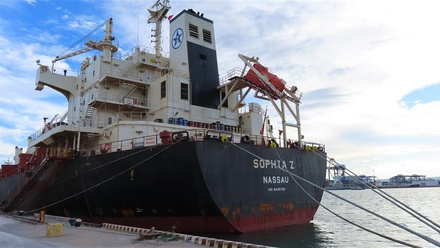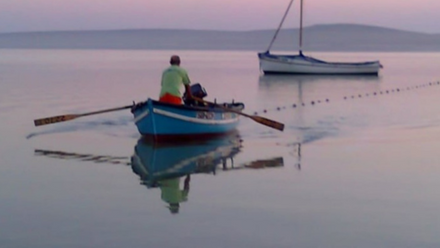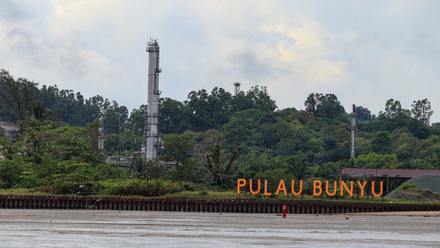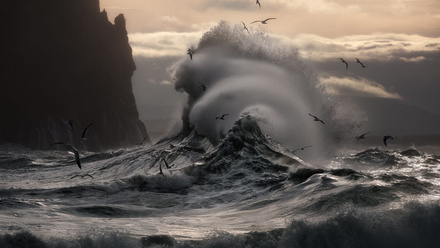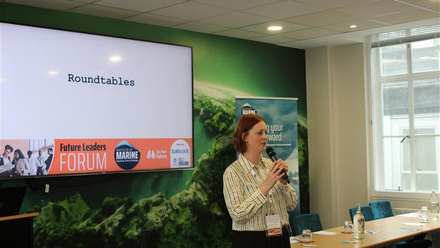Watchkeeping in spotlight after Solong and Stena Immaculate disaster
Ongoing investigation to look at multiple factors after fatality on board container ship Solong.
Watchkeeping is a necessary and vital function of what an officer of the watch (OOW) must perform. Crew members, too, understand that the safety of their vessel and crew mates is paramount when required to support the OOW in these essential safety duties.
This was part of the focus in the Marine Accident Investigation Board’s (MAIB) interim report on the collision between the Portugal-flagged container ship Solong and the anchored US-flagged tanker Stena Immaculate off the British North Sea coast on March 10, 2025.
What happened in the North Sea
The Solong, a feeder vessel operated by Germany's Ernst Russ AG, was en route from Grangemouth, Scotland, to Rotterdam, Netherlands on a fixed rotation. Its cargo included various goods, including, as normal, some designated dangerous goods, but not the sodium cyanide as first feared.
Meanwhile, the Stena Immaculate, an oil/chemical tanker managed by Crowley Maritime and chartered by the U.S. government, was anchored off the Humber Estuary, awaiting berth availability to deliver 220,000 barrels of Jet A-1 aviation fuel.
At 7:00am, Solong’s Master took over as sole watchkeeper, some eight hours since last bridge duty. That morning, patchy fog reduced visibility considerably, with visual range as low as 0.25 nautical miles (nm). On the Stena Immaculate, the Second Officer was on watch on a 12-hour shift.
At 9:47am, Solong’s bow collided with the port side of Stena Immaculate, breaching one of the tanks of highly volatile Jet A-1 fuel. This led to a fire which quickly engulfed both vessels, compelling the crews to abandon ship. As the crew of Stena Immaculate left the vessel, they activated fire monitors to cool adjacent cargo tanks, effectively containing the fire and preventing further damage, and have subsequently been praised for their bravery.
The collision resulted in the presumed death of Filipino crew member Mark Angelo Pernia, who was reported to be on Solong's forecastle at the time. Thirty-six other crew members from both vessels were rescued.
Environmental concerns quickly mounted as aviation fuel spilled into the sea, and thousands of plastic pellets, known as nurdles, were released from the Solong's cargo. These pellets have since washed up on the Norfolk coast, posing a threat to marine wildlife. While any fuel spillage at sea can be dangerous, most of the fuel is thought to have quickly burned up or evaporated; the long-term environmental harm from the Stena Immaculate spill has yet to be properly quantified, although extensive pollution appears to have been avoided.
Arrested and charged with gross negligence manslaughter, Solong’s Master, a 59-year-old Russian national, was that vessel’s only watchkeeper during the hours leading up to the incident and is scheduled to stand trial in January 2026.
The MAIB's investigation continues, focusing on navigational practices, crew fatigue management, vessel maintenance, and the use of the offshore area as an anchorage. Over time, other non-vessel specific factors such as the pressures of timekeeping and contractual obligations IMarEST hopes will also be considered.
A wake-up call
The incident serves as a stark reminder of the potential risks involved in shipping. As investigations proceed and legal proceedings unfold, the maritime community must reflect on any lessons learned to prevent such tragedies in the future.
MAIB has suggested that fatigue management, a well-understood concern in the maritime industry, will be investigated. It would only be the latest in a line of similar accidents, including several covered in other editions of Troublespot, in which poor fatigue management culminated in disaster.
Other root causes will present themselves, too, as the ongoing investigation uncovers more detail. These might consider the full support, and engagement of, the human crew on board, correct use of equipment, support from shore and time pressures. Whatever the findings, it is hoped they will help improve safety in the long run.
Read more: Fatigue and repetitive tasks to blame for MV Alfred accident
Tell us what you think about this article by joining the discussion on IMarEST Connect.
The information contained in this article refers to an interim MAIB report, which is based on the various aspects of the investigation completed to April 2025. New evidence may become available that might alter the circumstances as depicted in the report this article is based upon.
Image: fire damaged vessel Solong in Aberdeen following accident in the North Sea. Credit: Shutterstock.

